Every Halloween, millions of children in the United States pour into the streets of nearby neighborhoods costumed as superheroes, villains, monsters, murderers, fairies, princesses, soldiers, and the walking dead. Their motives are clear enough: locate neighborhoods with houses that give out the best candy, in hopes of returning home with a hefty bag of sugary loot that will pay the “parent tax” and satisfy their candy needs for weeks if not months to come.
But Halloween is about more than candy. The widely celebrated holiday offers us the unique opportunity to break with convention and unleash our imaginations. For a night, children and adults can be liberated from the strict confines of their pedestrian identities. We can costume ourselves as virtually anything, provided we can find our desired costume at a store or can afford the materials necessary to construct the ensemble.
For a night, a human can become an alien, vampire, or werewolf; the living can become the dead; children can become doctors, pilots, or astronauts; the weak can become strong; the fearful can become frightening; the meek can become bold. Halloween offers us the opportunity for instantaneous metamorphosis.
October 31 also offers us an opportunity to better understand ourselves and society. By critically examining popular, mass marketed costumes we learn something about the persistent and pernicious power of a 5,000 year-old worldview that silently shapes our individual and social lives: patriarchy and its narrow, dehumanizing, sexist vision of male and female humanity. It may seem strange to learn about the “real world” through one of our society’s most whimsical and seemingly imaginative holidays. But invaluable insights into who we are and what we believe, as men and women, lie just beneath the witches’ hats, monstrous masks, and muscle-padded superhero body suits.
The Frightening Realities of Patriarchy
Despite the overwhelming evidence for its historic reality, some have embraced the patently false claim that “patriarchy” is a conspiracy concocted by man-hating feminists. The first problem is that many do not know what scholars and critics mean by the term. Cultural critic, Robert Jensen, offers a clear explanation of patriarchy in his book, The End of Patriarchy: Radical Feminism for Men (2017).
“‘Patriarchy,’ from Greek meaning ‘rule of the father,’ can be narrowly understood as the organization of a human community (from a family to a larger society) that gives a male ruler dominance over other men, and overall gives men control over women…. In contemporary social analysis, patriarchy is typically understood as ‘a system of social structures and practices in which men dominate, oppress, and exploit women.”
Humanistic studies provide us with endless examples of thinkers, institutions, and societies that explicitly endorsed the belief that males are by their very “nature” superior in ability and importance to women. Women’s essence, as defined by powerful men, is found in their reproductive capabilities and service to men. And the female characteristics that enable those capabilities, so says patriarchy, are the very reason why men are entitled to take charge and control women.
Turning to the preeminent and influential thinker, Ancient Greek philosopher, Aristotle we learn something of the essence of the patriarchal thinking that continues to haunt us. In part XII of Politics (350 BCE). Aristotle, explained that males’ right and responsibility to rule over females was rooted in their biological nature.
“For although there may be exceptions to the order of nature, the male is by nature fitter for command than the female, just as the elder and full-grown is superior to the younger and more immature.”
While each has the potential for moral virtue, this virtue differs depending upon the nature of each. In part XIII he writes:
“the temperance of a man and of a woman, or the courage and justice of a man and of a woman, are not, as Socrates maintained [in Plato’s Meno], the same; the courage of a man is shown in commanding, of a woman in obeying….All classes must be deemed to have their special attributes; as the poet says of women, ‘Silence is a woman’s glory,’ but this is not equally the glory of man.”
Here Aristotle gives us a quintessentially patriarchal definition of manhood and womanhood, a rendering that is a blatant stereotype as is clear from basic experience. A stereotype is a false or mistaken assertion that a particular characteristic is logically tied to or essential to being a member of a particular group. In this case, Aristotle claims that males are natural born leaders while the “virtue” of femininity lies in passivity or obedience to male authority. Though ancient in origins and logically antiquated, this dehumanizing vision of men and women informs common sense practices and assumptions in the present.
Patriarchy’s Guide to Halloween
Patriarchy's continued influence in our culture is clearly seen when we critically examine the general differences between Halloween costumes marketed and available to boys and girls. A perusal of your local department store or the nearest corporate costume chain, like Spirit Halloween or Party City, reveals distinct conceptions of what it means to be a boy and girl.
Boys are invited to imagine themselves as doctors, firefighters, police officers, soldiers, action heroes, and an assortment of (scary) zombies, skeletons, dinosaurs, and clowns. Girls, by contrast, are invited to be princesses, fairies, angels and an assortment of “cute” insects (butterflies, bumblebees, ladybugs) or animals (kitties, unicorns, bunnies), and a far fewer assortment of action heroines.
In recent years the number of “occupation” and superhero costumes marketed to girls has increased, but they are still significantly less than those offered to boys. For Halloween 2022, Party City offered girls nineteen choices in the Superhero category whereas boys had thirty-three choices. Spirit Halloween offered girls fourteen “Occupation and military costumes” compared to 36 choices marketed to boys.
The boys are cast as those acting forcefully, be it as the hero or the villain, the cop or the robber. The girls are tasked with being playful, whimsical, and cute. Even when her costume is occupational or heroic, the names of the costumes and the models exemplifying the image remind girls that being cute is the highest priority.
The psychiatrist James Gilligan reminds us that manhood has and continues to be crucially linked to violence. Backed by tomes of evidence from human history, Preventing Violence (2001) he writes:
“Masculinity, in the traditional, conventional stereotypical sex-role of patriarchy, is literally defined as involving the expectation, even the requirement, of violence, under many well specified conditions: in time of war; in response to personal insult; in response to extramarital sex on the part of a female in the family; while engaging in all-male combat sports; etc.”
Men have been defined and thus conditioned to be the violence objects of the powerful. By contrast, the powerful have defined women as objects of beauty and sex. Gilligan writes,
“In patriarchal culture women are honored, primarily, for sexual chastity outside marriage, and fidelity (and fertility) within marriage. I am calling that female gender role the equivalent of being a 'sex-object' because it means that the woman is obliged to renounce her own sexual subjectivity; she is not permitted to have sexual wishes and activities of her own choosing, before, during, or (in some cultures) even after marriage, but must instead be her husband's sex-object. "
As a prime example, just this month an acquaintance on social media posted a lament about girls at his son’s high school walking up to boys at a high school dance to ask them for a kiss on the lips. Several people were aghast at the girls’ behavior and spoke with fondness of the “old days” when boys initiated such interactions.
Trick-or-Treating with Patriarchy
Even as modest gains are being made in liberating children of a patriarchal gender ideology masquerading as biology, a closer look at the details of ordinary costume selections reminds us much remains unchanged. Costume names and designs undermine what might otherwise appear to be costume gender parity. At Party City and Spirit Halloween, when boys are pirates they are “kings,” “rascals,” “looters,” or “rebels.” When girls are pirates, they are “precious,” “beauties,” “cuties,” and “sweethearts.” When boys are ninjas they are “warriors,” “avengers,” and “dragon slayers,” while the offering for girls may be something like “Sassy Samurai.” Girls can even be “sassy” space girls, but, unsurprisingly, no such “sassy” offerings are provided in the boys section. She can’t just be a devil or a cat, she has to be a “Devil Diva” or “Pretty Kitty.”
Costumes geared toward boys represent characteristics, as evidenced in the names, and/or professions that elicit social respect and financial stability. Those marketed to girls highlight comparatively diminutive qualities and roles, as per the dominant culture, indicating that one is pleasant but not necessarily “powerful.” Given that our society rewards power—associated with assertiveness and leadership—the implications of such symbolic associations are clear.
This reinforces the idea that one group is more valuable or important the other. Add to this that many continue to find it difficult to imagine women in positions of power and it becomes all too clear that Halloween has become another opportunity to perpetuate patriarchal visions of girls and women; one in which girls play minor roles.
The naming and designs of superhero and law enforcement costumes also tell us something about the continued stereotyping of girls in our society. Batgirl and American Dream, for example, come with skirts or “tutus” that suggest they are more ready for a dance recital than doing physical combat against ruthless foes. This difference further suggests the continued expectation that girls obey patriarchy’s dictate that “beauty” (and “sexual attractiveness,” in adulthood) and “cuteness” are cornerstones of female identity and worth.
That mass marketed costumes reflect and reinforce patriarchy's appearance-based definition of womanhood is further illustrated by the most common words used to describe junior girls’ costumes: “sweet,” beautiful,” “honey,” “heartthrob,” “sweetie,” “sassy,” and the most common of all, “cutie.”
Consider Spirit Halloween’s “Cute Cop,” “Officer Cutie,” and “Sassy Sergeant” costumes. Each costume features a skirt, the perfect attire for a female officer in the line of duty. I’m sure that I will surprise exactly no one when I write that there are no such costumes marketed to boys. Such language and design would be deemed too patronizing or trivial to be directed at the definitionally important boys. Their potential for power must always be taken seriously. The language of cuteness suggests a degree of passivity that runs counter to the most basic definitions of those symbolically associated with power.
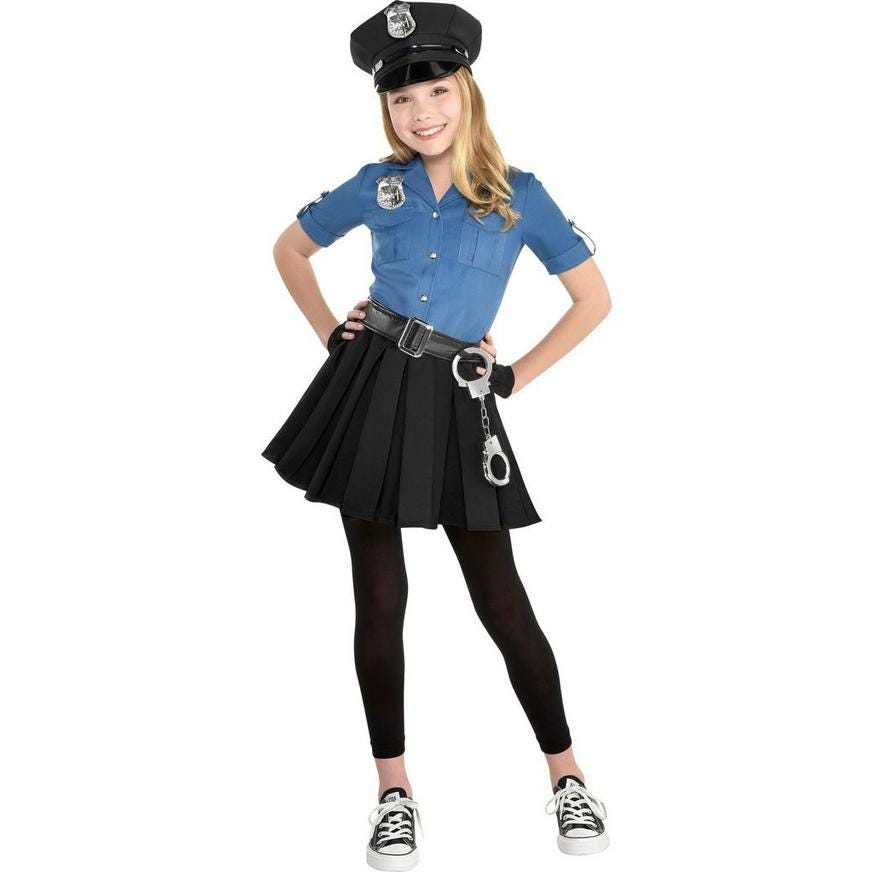
Such critiques may seem trivial until we begin to honestly reflect on the continued presumption that important jobs like police work are for men. Many of us harbor an uncritical, unconscious presumption that police officers are by definition men—“policemen,” to be exact. As an example, I sometimes ask students to write down a few questions, incomplete sentences, they would have if I entered the classroom and emphatically announced, “An officer has just been shot!” The vast majority of students use the pronoun “he” or “him” in their questions. It's important to understand that this perfunctory exercise reveals an unconscious inference which presumes something that was not indicated in the question. The sex of the officer.
I recall running this thought experiment in a class where one of the female students was pursuing a career in policing. She not only intended to be a cop but also knew female police officers. When she wrote down her questions she also used the gendered pronouns “he” and “him.” And she was frustrated by her own automatically androcentric thinking.
Androcentrism is a way of thinking that takes male-centered patriarchal beliefs, values, and assumptions for granted. Beliefs like “being a cop is a man’s job,” and being beautiful is a woman’s job. Most of us don’t consciously embrace androcentrism, it’s simply a lens or set of ideas we pick up living in a society shaped by a patriarchal cultural heritage. This male-centered thinking is internalized by women and men of all kinds, including men who struggle to conform to its homogenized expectations of men themselves.
To be clear, the presentation of boys’ selfhood is not without negative implications. Feminist theorists including Jackson Katz and bell hooks argue that gender stereotypes not only dehumanize girls, excessively emphasizing their status as “beauty objects,” they also promote the dehumanizing vision of male-selfhood as fundamentally centered around the capacity for force and violence. Halloween costumes for boys (and men) overwhelmingly identify maleness with a particular kind of power, namely power to provoke fear or enact violent force, through guns, strength and/or super powers. This is not the only vision of power. As the authors of Packaging Boyhood write,
“Power can be about physical strength and dominance, but it can also be the power to change someone’s point of view, persuade evil to be good, to challenge others to do good things.”
Beyond the toddler age, boys’ costumes overwhelmingly communicate menace compared to girls’ costumes. As the authors of Packaging Boyhood write,
“For the youngest boys there’s the occasional Pooh Bear or SpongeBob, even a cute puppy or lion, but they are buried in an avalanche of ninjas, special Delta force soldiers, and Transformers.”
A few years ago I watched a father discourage his young son—maybe 4 or 5—from choosing a Thomas the Tank Engine costume, and encourage him to choose something more menacing, more “cool.”
As much as we think of Halloween as a day for children and adults to “dress up” and set our imaginations loose, most end up Trick-or-Treating with patriarchy, choosing costumes that reinforce ancient stereotypes about the essence of maleness and femaleness.
There’s No Biology in Your Gender
Many see no problem in the mass marketing of polarized costume choices for boys and girls. It just seems natural, according to many, for a little girl to want to be a princess and for a boy to want to be a monster or soldier. But feminist theorists argue that such thinking is the result of patriarchal bias and indoctrination rather than biological reality.
While the words “gender” and biological “sex” are used interchangeably, feminist thinkers of the 20th century recognized that the two are ontologically distinct. Biological sex pertains to chromosomes (XX and XY) and primary sexual characteristics (ovaries and testes). In other words, reproductive sex pertains to the classification of animals to make sense of reproduction. Gender is something entirely different.
The ideas associated with what we call “gender” are so prominent and so normalized that they are taken for granted as biological realities. Yet gender does not describe biological realities. Gender is rather an evaluative belief system, masked as “the way things are,” that actually dictates to others what should or should not be the case. Patriarchal gender dictates and assigns, to males and females, the social roles, activities, behaviors, and characteristics deemed appropriate for them. These prescriptions are clearly non-biological since prescribing a person to be something they already are would be redundant, like insisting that water be wet, snow be cold, and fire be hot. If being a man or woman was strictly about biology we would have very little to be instructed in.
I am not arguing that we should not make and communicate value judgments. To make such an argument would be literally absurd since that very statement is itself a value-laden instruction! Rather we should ask what good reasons there are for instructing biological males and females to adopt particular character traits and practices but not other traits and practices. Yet the dictates of patriarchal gender ideology are not made in open, rational dialogue; they are communicated and enforced through manipulative shaming and uncritical adherence to the culturally dominant patterns of thought, belief, and practice.
Gender cloaks its prescriptive beliefs in the garb of biological determinism—an assertion that something must be because it is inherent and thus beyond the power of human choice to change. Patriarchy’s gender ideology attempts to dictate to others not only what to do or how to behave, but who to be, constraining and undermining male and female wholeness and dignity with its exploitative vision of polarized humanity. It is a belief system that dictates identity, infringing upon the autonomy of male and female-bodied persons to determine, for themselves, who they wish to be or to become.
The pernicious effect of patriarchal gender is never more openly on display than on Halloween night when we see how narrow our self-conceptions are framed. How few of us dare to imagine ourselves into some other sense of self, some other possibility.
Modeling Patriarchal Ideology
There’s more to most pirate costumes than a name and a character. There’s also the gendered costuming that it suggested by the way they are modeled on the package, an example often followed by those who then wear the costume.
Costumes marketed to girls convey the idea girls’ principal purpose is to look cute or beautiful, while those targeting boys promote the idea their purpose is to look tough and be ready to fight back. Be they action heroes, officers, athletes, monsters or pirates, the models on the so-called “boy” costumes stand in postures that convey action, strength, assertiveness, and agency. Whether the costume is that of Spiderman, Batman, a ninja, pirate, or monster, they are all ready to take action—they mean business.
Most of the masks that accompany boy costumes have built in expressions of anger or even madness. When the faces of the costume models on the packaging can be seen, they usually brandish stern eyes and sneers. Beyond assertive stances and sneers, we can tell that the costumes marketed to boys are meant to be taken seriously by the absence of frills and the presence of, in a word, pants. They communicate the message, “I am here to directly impact the world,” namely through force. Being “attractive,” in the conventional sense, is not of importance.
Costumes marketed to girls showcase models conveying passivity, whimsy, and playfulness, specifically identifying girls with cuteness and beauty. Whereas some boy costume models smile, nearly all of the girl costume models smile. With rare exceptions smiling seems to be a requisite for girl costumes much the same way staid or fierce facial or mask expressions are the norm for boys’ costumes. This is true whether the costume is a princess or fairy, witch or bat, angel or devil.
The influence of these models should not be ignored. Children are social sponges, adeptly attuned to what is “right” or “normal” among their peer groups. I was reminded of this during the Halloween of 2021 when one of my children, who was five, brought the front package of his ninja costume as a guide for his mother to do his costume make-up.
To be clear, I have not argued that I think there’s something wrong with smiling or playfulness. Nor am I suggesting that dominance and power-over others is something that ought to be so celebrated in boys during Halloween. My purpose, at present, is simply to bring these easily overlooked facts to light. Once alerted to these patterns we are quickly able to begin seeing exemplifications all around us, alerting us to the deeply embedded and socially enforced gender ideology marketed to children at a young age, shaping their ideas about who they are or who they can be.
A Tale of Two Boxers
Children’s boxing costumes offer a valuable window into the culturally dominant visions of masculinity and femininity. Just compare the "Everlast Boxer" costume marketed to girls to the one marketed to boys.
We see that both costumes include boxing gloves, shorts, and a hooded jacket. We are not surprised to see that the boy costume was colored blue while the girl’s costume was pink. Few recognize that this patriarchal gender color schema was inverted, 100 years ago. During the first 30-years of the 20th century, pink was marketed as a color for boys since it was closer to red, symbolic of power and, as per patriarchy, men. Blue, on the other hand, was thought to reflect something that is delicate, and thus more appropriate for girls and women.
Looking beyond color, we see important differences in the design and modeling of the costumes. We see that the boys shorts are designed to hang below the knee. The girls shorts are significantly shorter, stopping around the thigh. The second difference is that the boy’s costume features a muscle vest. It’s worth noting, of course, that this chest piece is for lighter skinned children and would not produce the “nude” effect for brown or black children. Characteristically, the girl’s costume does not come with built in muscles, though a muscle padded shirt would have been a simple addition.
The other major differences have to do with the modeling of the costume and accompanying makeup. The postures of the product models are not organic. They are directed by adults. The boy model takes a standard power stance expected of a boxer. His legs are spread out to hold his ground in anticipation of a blow by his opponent. His facial expression is appropriately stern given that he is readying himself for violent combat. Makeup is added to the boy in blue’s right eye to represent a “black-eye.” He is a fighter.
We find a very similarly designed costume marketed to very young boys, too.
The modeling of the girls costume is very different. Her legs are close together. She flashes a wide, teethy smile. This is no fighter. She is a child loosely pretending to be a boxer, a boxer who will hit no one and be hit by no one. Taken together, these two costumes reinforce the idea that the basis of feminine worth is in pleasantness and cuteness, and the value of masculine worth is in the capacity to enact force—to do violence.
The significance these costumes have on our imagination becomes clearer when we realize how easy it is to think of an actual male boxer or a man exerting physical strength. Consider how far off the above boxer costume marketed to girls is from one of the attire and demeanor of the greatest female boxer in the world, today—an American named Claressa Shields.
Shields is relatively unknown in the broader society but won a gold medal in the first-year women’s boxing was included in the Olympics, in 2012. The following Olympics, in 2016, she again won gold, again. To-date, Shields has won more than 70 fights and lost just one. Why not model a girls’ boxing costume of the greatest living female boxer?
To be clear, I am not arguing that such a costume is bad or worse than the one marketed to boys. What are the consequences of promoting a violence prone self-image to boys who will grow up to be men, who are overwhelming responsible for the majority of violence in the world? How might their self-image and capacity to engage in non-violent communication be improved if they could adopt the relaxed, playful demeanor of the girl costume model? Radical feminist critics of patriarchal gender, such as bell hooks, Robert Jensen, and others, do not think the solution is to have girls adopt the self-identity of a violent, conflict oriented masculinity. Better to identify the best qualities in the dominant visions of masculinity and femininity, add the missing humane and humanistic characteristics, and remake our notions of the social-cultural meaning of manhood and womanhood.
Masks Are for Boys, Show Me Your Teeth
The differences between the physical components of boys and girls’ costumes also communicate patriarchal meanings. Very few girl costumes are accompanied by face-covering masks, even when the character being emulated wears one or would otherwise require one. One example includes a Pokémon costume of Pikachu marketed to girls. Compare the one for “her” to the one for “him.”
I challenge you to observe Halloween costumes or walk into shops with costumes and to find more than one or two costumes with masks covering the face that are marketed to girls. And if you can find them I am willing to bet that the model on the package is not wearing the mask, which has often been the case with Power Ranger costumes marketed to girls.
Sometimes costumes marketed to girls that emulate a character intended to have a mask feature alterations. Take a look at the Marvel superhero costume of the Wasp, marketed to girls. Compare the costume, which is widely available at many stores, with the actual superhero’s depiction. What’s the difference?
For those who don’t know, the Wasp is allied with, and part of the same superhero story as Ant-man. With this in mind, compare the Wasp’s costume to the Ant-man costume marketed to boys.
The obvious difference is that the Wasp’s mask has been altered to show the mouth and more of the face. Ant-man’s mask attempts to faithfully reproduce the original. Why is the costume of the heroine altered while Ant-man’s is the same? It’s worth mentioning that the adult Wasp costume has the same modifications.
The face is central to communicating properly patriarchal feminine and masculine selfhood. Bashful eyes and sweet smiles communicate patriarchy’s fundamental conceptualization of femininity: compromising, soft, pretty, and compliant. On the other hand, most boys and men’s masked costumes symbolize menace, dominance, violence, or (plastic) stoicism. Halloween costumes, viewed critically, help us to understand the deeper layer of costume hidden beneath the external guise of the pirate or the fairy. As feminist historian Gerda Lerner put it in The Creation of Patriarchy, gender itself is “a costume, a mask, a straightjacket in which men and women dance their unequal dance.”
Resistance is Not Futile
Despite the dominant trends in Halloween costuming there are examples of resistance to patriarchal gender norms. Girls’ costume options have grown over the nine years of my monitoring costume trends in the U.S. Since 2013 the number of heroine costumes has grown as the number of major motion pictures featuring female action heroes have grown. Today, girls will find a number of super hero costumes marketed to them including Cat Woman, Wonder Woman, Black Widow, Captain Marvel, Ghostbusters, Harley Quinn, Violet from the Incredibles, or Shuri from Black Panther.
To their credit, Target offers consumers a small selection of “gender neutral” occupational costumes, and the models for their "Kids' Fighter Pilot Costume Jumpsuit" and "Kids' Army Costume Jumpsuit" costumes appear to be girls. The model for the “Kids’ Royal Knight Blue Halloween Costume” also appears to break with convention. The growth of gender neutral language in naming costumes is itself an improvement.
Party City also, as of 2022, offers a selection of “career costumes” that are not only marketed to girls as well as boys, but also appear to feature boy and girl models on the packaging. Though, strangely, a link to the "Career Costumes for Kids" appears as a category under "boys' costumes" but not "girls costumes."
The “Girl Empowerment Halloween Costume Guide,” by A Mighty Girl, details hundreds of costumes from a variety of categories that can help unleash girls’ imaginations and break with patriarchal gender norms.

Another group, Take Back Halloween, offers guidance in constructing “do-it-yourself” costumes of important but often overlooked women in history. The website features biographies for each woman and provides basic instructions about how to construct homemade costumes. Among their highlighted heroines and costumes are the goddess Artemis, sharpshooter Annie Oakley, scientist Rosalind Franklin, anti-imperialist Hawaiian monarch, Queen Liliuokalani, and the fearsome bird goddess, Morrigan.
As significant as it is to note the gendered messages in dominant costume trends, the ultimate issue is not so much what boys and girls, men and women wear. It is about the constraints placed on the imaginations of people who are socially policed, held accountable, for transgressing gendered expectations. As the spoken word artists Hannah Halpern, Amina Iro, Reina Privado, and Asha Gardner expressed in their 2013 poem, “Halloween,”
“Society is trying to squeeze the fantasy out of us, turn our feminine fatal. So this year/ I think I’ll be monster….I’d much rather be vampire. My reflection disappearing every time I look in the mirror/ so I wouldn’t have to worry about flaws that stare blankly back at me/ I will suck every woman stereotype out of your throats….
“But no matter what garments we wrap ourselves in / a woman’s status as trick, treat, or geek is not up for discussion/ a woman dressing, acting, or being should be her choice/ if a woman wants to wear a skimpy outfit let it be her choice/ if a woman wants to cover up let it be her choice/ if I want to be a motherfucking monster, then let it be my choice.”
Feminist thinkers have long claimed that the “personal is political.” The simple meaning of this concept is that what we do in our everyday personal lives has implications for broader power relations in society. As important as it is to participate in electoral politics, feminist thinkers have long reminded us that we neglect the political import of the seemingly mundane aspects of our personal and cultural life at our peril. In short, social change begins with thinking seriously and critically about not only the actions of our political leaders but also about the words we use, the jokes we tell and laugh at, and even how we dress on Halloween night; and whether they reflect our authentic selves and fundamental values.
We can and should applaud the growing selection of non-patriarchally gendered costumes marketed to girls. But we must also recognize that we do not see much growth around those marketed to boys. Outside of a parody costume it is difficult to find, for example, a costume of a ballerina or a dancer marketed to boys. And a significant majority of “boy” costumes emphasize fear, danger, and dominance. Boys, even young boys, are rarely invited to imagine themselves into some of the gentler identities that girls are too often pressured to adopt. Genuine freedom from patriarchal gender will include the liberation of not only girls’ imaginations and self-conception, but also the imaginations and self-conception of boys.
If you enjoyed this post please share it with others and like it by clicking the heart icon. Be sure to subscribe if you haven’t already.
Invite Dr. Nall to Speak
Dr. Nall delivers energetic live presentations and engaging workshops on the subjects featured in Humanities in Revolt. Those interested in booking a workshop or talk can get in touch through Facebook or by leaving a comment.
Subscribe
Subscribers will receive periodic posts pertaining to the broad domain of humanistic inquiry, from the insights of great thinkers throughout human history, the meaning and importance of critical thinking and ethics, the underappreciated poetry in everyday existence, to contemporary cultural analysis and the ongoing struggle to combat human oppression and violence. You will also have the opportunity to engage the author and our online community in dialogue about each post.
Why get a paid subscription?
Paid subscriptions directly support Dr. Jeffrey Nall’s efforts to produce and share publicly accessible independent scholarship and analysis. Supporting donations can also be made through PayPal. For more about my work go to JeffreyNall.com and find me on Twitter, Facebook, and Instagram.





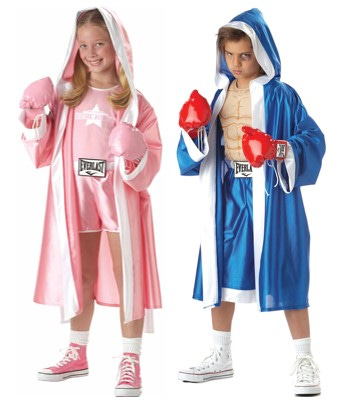
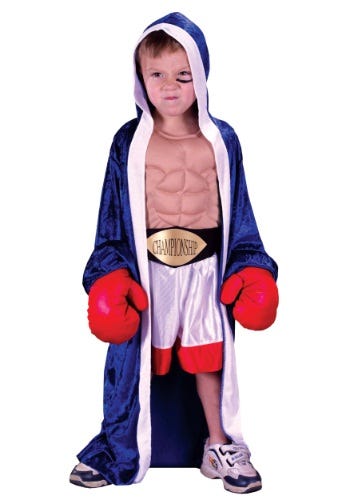
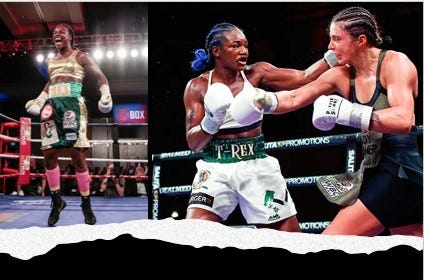
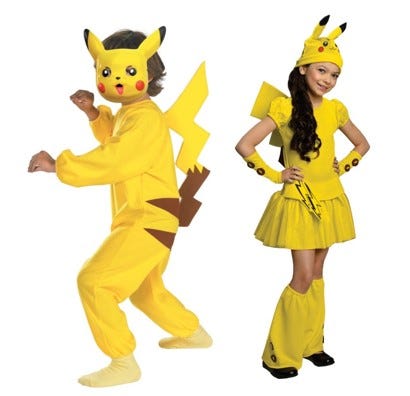
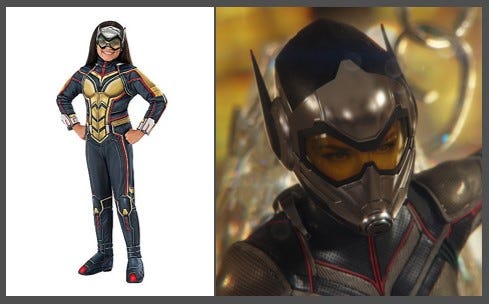
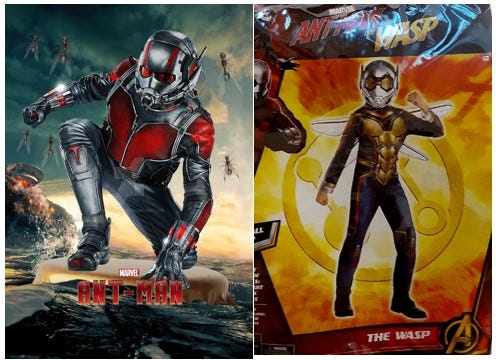


A fascinating article! Having just wrapped up Halloween here, I can't help but to reflect upon the many, many costumes I saw tonight: every single one went straight down the gender divide (except, perhaps, for the (very) little girl who's Superman costume was obviously a hand-me-down from her older brother who was dressed as The Hulk). Gender, clothing and costumes, etc. expectations have been something my wife and I have been dealing with for years ... not from the kids - they'll wear pretty much anything regardless of colour, theme, variety - but from what older relatives think ....